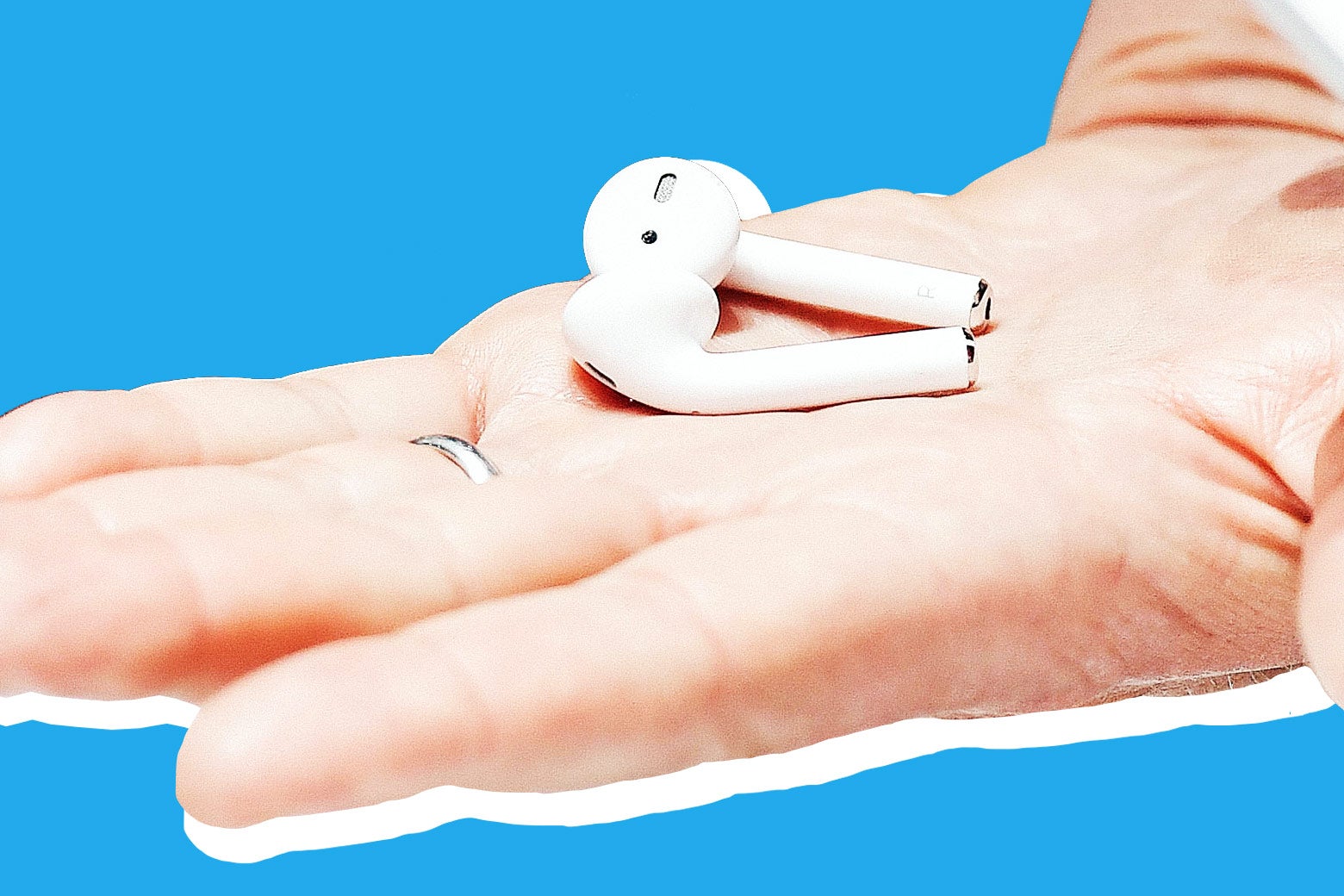The future of audio isn’t wired—and Apple knows it. The iPhone’s headphone jack, a beloved former hardware accessory, was eliminated with the iPhone 7. “It’s clear to me that Apple has forceful, but considered opinions about how the next generation of phones should fit into our lives,” the Verge’s Nilay Patel wrote in his review of the phone in 2016. “But it’s also clear that the iPhone 7 is a transitional step to that vision of the future, not a complete expression of it.” We learned more about what that future would encompass when Apple also introduced AirPods, its wireless, Siri-imbued earbuds.
However, since the launch of the iPhone 7, Apple has babied those of us not ready commit to the wireless audio way of life by including Lightning adapter–based white earbuds and a Lightning-to-3.5 mm jack dongle in the box with new iPhones. Apple won’t do that forever, though. Barclays’ analyst Blayne Curtis predicts that when Apple’s next iPhones launch later this year, we won’t see that Lightning-to-3.5 mm headphone jack dongle included anymore, cementing the headphone jack’s place as a hardware staple of the past. Apple has a history of doing this sort of thing. For those who remember, Apple drew ire for removing the floppy disk in the iMac back in 1998. It later got pushback for removing optical disc drives in its laptops. Both moves anticipated—or precipitated—larger shifts in the technology industry; greater onboard computer storage and higher internet bandwidths and speeds eventually allowed for cloud storage and streaming media options. In the case of the headphone jack, Apple anticipated the shift to wireless audio streaming enabled by persistent, higher-quality, lower-power wireless standards. Since the iPhone 7’s launch, other popular smartphones and the audio accessory industry have embraced the wireless way of life.
With that in mind, finally ditching the headphone jack dongle makes sense. We’ve had two years of transition time, and those who have a pair of wired headphones they truly love could purchase an adapter from a retailer. But perhaps it’s time for Apple to go one step further. The company shouldn’t just eliminate that dongle from new iPhone purchases. It should swap out those wired EarPods in favor of an included pair of AirPods.
There’s good reason Apple hasn’t done this yet. AirPods run at $159 a pop while its Lightning-connected EarPods cost only $29. If Apple were to include AirPods in the box with a new iPhone, it would likely come at a proportionately increased cost—likely at least $100 or $130 on top of the price of the iPhone itself. EarPods are a cheap accessory to include in the box, but Apple would lose out on profits if it didn’t make a price adjustment for including AirPods instead. And like its decision to ditch the headphone jack in the first place, forcing people into using AirPods—and raising the price of an already maybe-too-expensive iPhone—would likely come at the expense of some serious criticism.
But by including AirPods in the box with a new iPhone purchase, Apple does itself a favor on a number of fronts. It finally draws consumers away from their reliance on wired iPhone earbuds; it makes the device mainstream, rather than a niche accessory for early adopters; and most importantly, it draws iOS users further into the Apple ecosystem—and potentially away from looming competitors like Google and Amazon. AirPods connect seamlessly with iOS devices such as iPhones, iPads, Apple TV, and the Apple Watch. As a pricier headphone option that works exclusively with such Apple devices, it might sway consumers to stick with Apple’s ecosystem—or purchase additional Apple products—rather than those of competitors. Getting AirPods into the hands of more iPhone owners could make users more receptive to Siri as a personal assistant—and when looking to augment their home with another digital assistant–laden device, they’ll look to HomePod rather than the Echo or Google Home. This would then tie those users to other Apple products such as Apple Music, too. While AirPod popularity is looking up—analysts estimate Apple will sell between 25 million and 30 million AirPods in 2018—that’s still only a small fraction of the reach it would get if included with iPhone purchases.
Even if Apple included AirPods with the new iPhone at no additional cost, Apple would stand to gain more from this change in the long run than it would lose in profits. Apple devices and Apple accessories are often seen as a status symbol. The real boon would be in locking iPhone users into all-around Apple users when excellent Android smartphones, smarter smart home speakers, and a growing array of cool third-party accessories are threatening the company’s dominance in the world of consumer tech. If Apple wants its Siri-driven, Apple Music–playing, Apple device–using way of life to keep growing, getting AirPods into the hands of more iPhone users would be a smart way to go. AirPods were one aspect of Apple’s future for mobile, the iPhone X was another. It’s time to unite this experience—it makes sense for consumers, and it makes sense for Apple.
